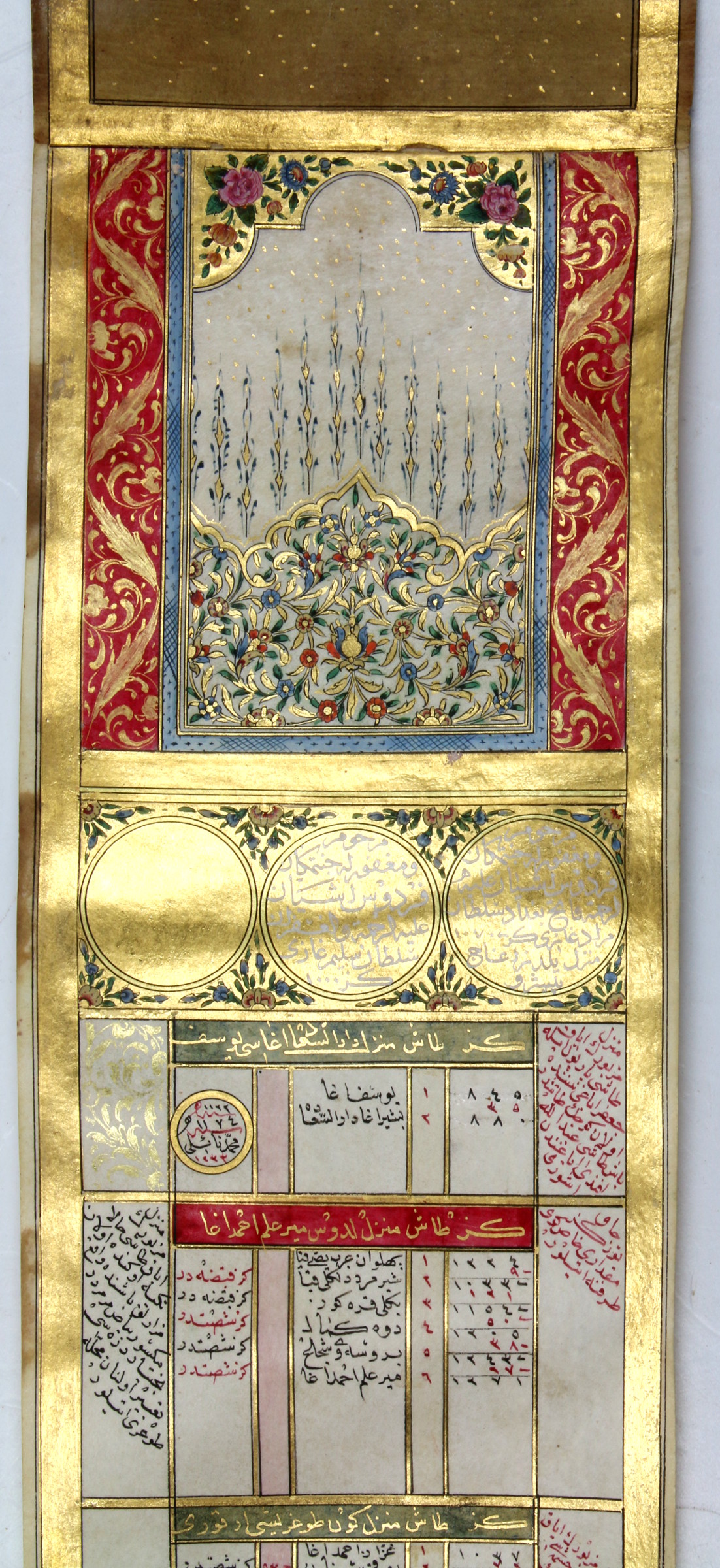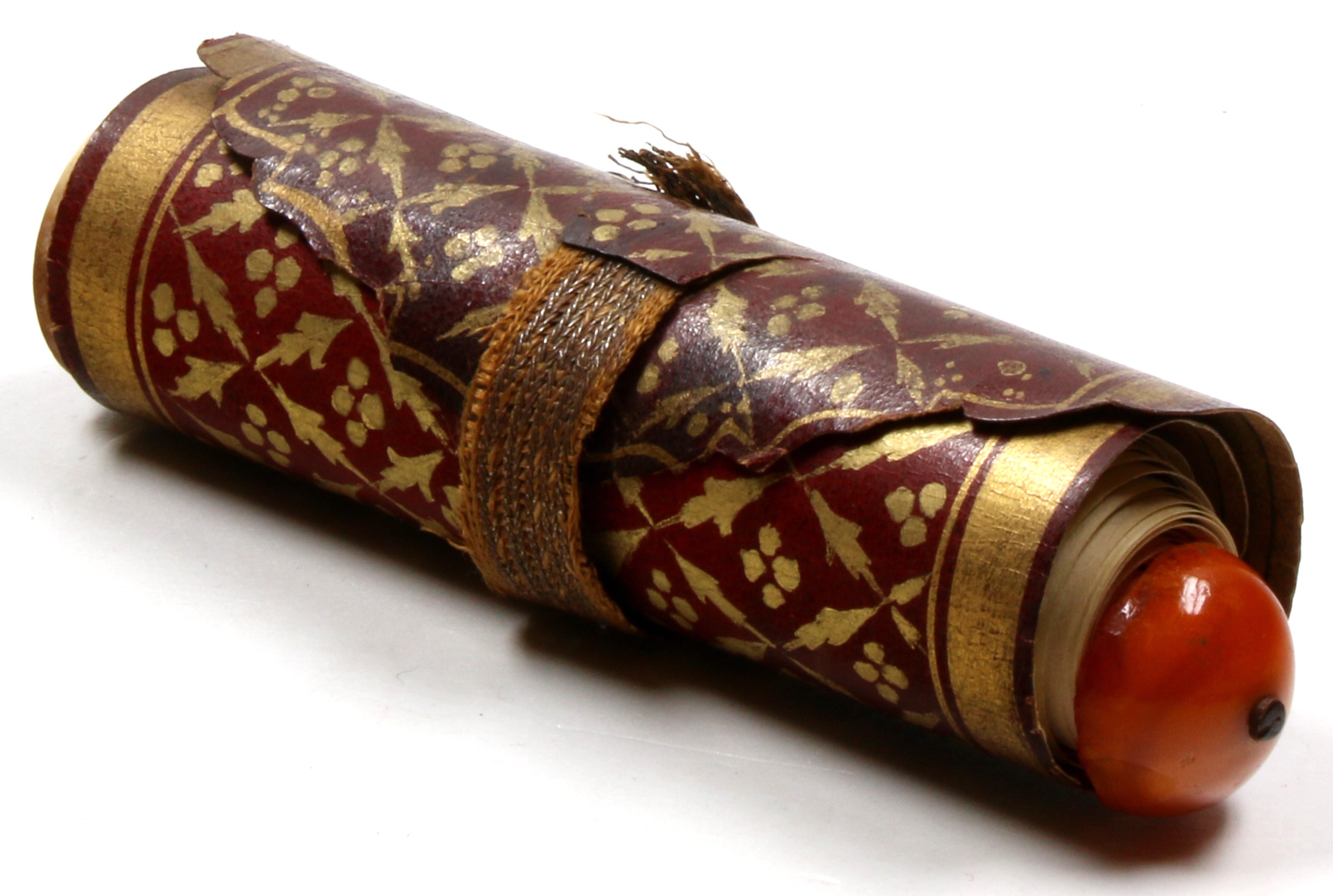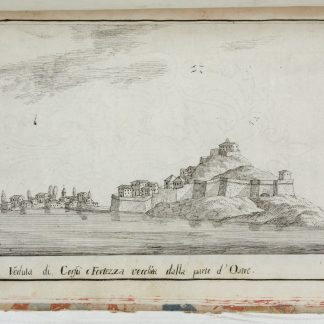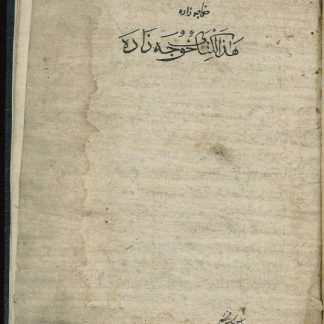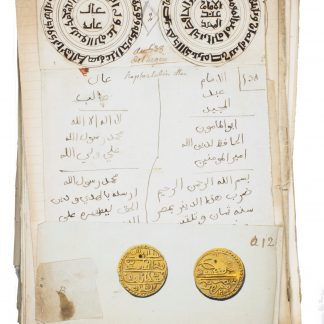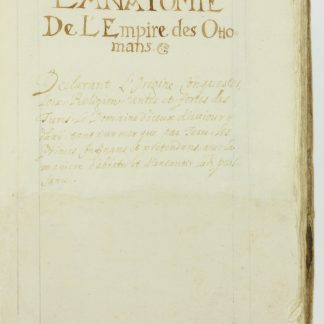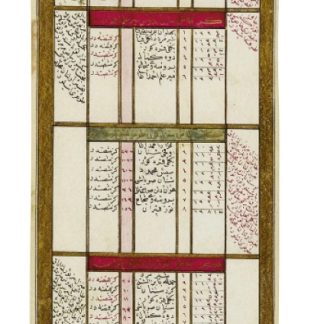Ottoman archery records
Menzilname [Archery chronicle].
2050 x 90 mm. Ottoman Turkish scroll on vellum, written in naksh ghubar script in black and red ink, headlines in white or gilt, bordered in gilt, red and blue, with a beautiful tezhib headpiece.
€ 25,000.00
A meticulously prepared and decorated archery record scroll from early 19th century Istanbul. Menzilnames such as this were detailed documents recording achievements in long-range shooting; this rare example lists various archery locations in the Ottoman capital, the records set there by the various archers, and their names.
The scroll begins with a beautiful tezhib headpiece, followed by two gold medallions documenting the distance records of Sultans Murad IV (1612-40) and Selim III (1761-1808), written at the top separately as a sign of respect. The empty medallion to their left was probably reserved for the then-ruling Sultan Mahmud II, but as he had set no notable shooting records at the time of writing, it was left blank. Following the headpiece, a small medallion gives the name of the scribe, Mehmed Naili, and the year he composed this menzilname, along with two dates (1122 and 1174 AH), probably indicating previous menzilnames that served as sources and were updated. Both the year and the name of the scribe are repeated in a colophon at the end.
This menzilname preserves records set at 43 different shooting ranges located in Istanbul's Okmeydani ("archery field"). The middle column states the name of the shooting range, the names of the archers, their achievements, and the number of stones placed there to mark them. The right and left columns were used interchangeably for the details of the shooting range.
Archery as a sport began in the Ottoman Empire during the 15th century and was practiced as target and as distance shooting. Various cities established archery fields, and within them, various shooting ranges were designated. These shooting lanes, called "menzil", were formed by two columns set at least 900 gez (547 metres) apart. Archers would attempt to set new records, and those who could shoot beyond the main stone at the end of the range would have new stones erected in their honour, recording the archer's name, the date of his shot, and the distance covered. In similar fashion, a menzilname would preserve for posterity the achievements of these famous archers, giving material proof of the archery tradition during the Ottoman era.
Sotheby's, Arts of the Islamic World Including Fine Rugs and Carpets, 1 May 2019, lot 21.
Light wear, small stains and holes, minor tears, not affecting the text.
Sinasi Acar & Murat Özveri, "Bir Istanbul Okçuluk Menzilnâmesi", in: Osmanli Bilimi Arastirmalari 18, 2 (Haziran 2017), pp. 24-58.



